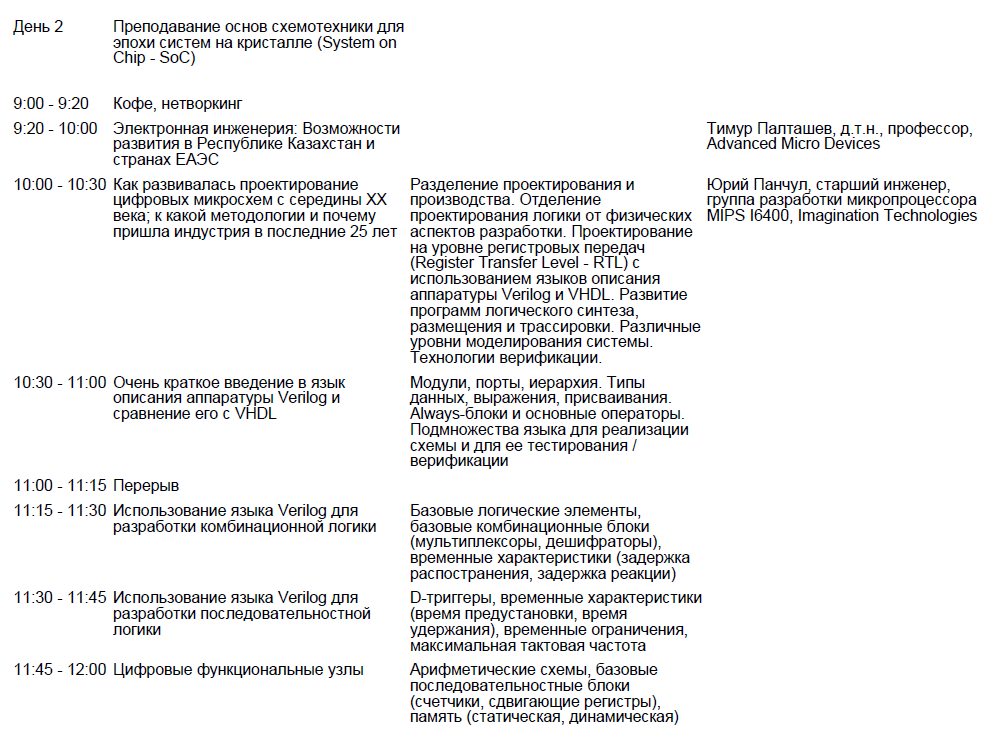Vhdl Binary To Integer Converter

I am providing two VHDL functions below. This is to convert from binary to packed BCD and vice-versa.

Mp3 Decoder Design & Implementation Using VHDL. Download Mp3 Decoder Design & Implementation. Of Mp3 decoder is shown in VHDL using Modalism. Is it possible to convert the input data in binary form (std_logic_vector) to integer in VHDL? The converted integer data is used to perform. CORDIC - Wikipedia. CORDIC (for COordinate Rotation DIgital Computer). Tamil Movie Veera Thalattu Songs Download. It is therefore also a prominent example of digit- by- digit algorithms. As part of my project for the Digital System Design course I have to use a component to display on the 7-segment display a INTEGER range 0 to 9999 (or a std_logic.
I have verified these on Xilinx Spartan 3AN Family and they can be synthesized. Use ieee.numeric_std.all; and ieee.std_logic_1164.all; libraries Function 1: Binary to BCD --source: (SO user Peque found the original url) function to_bcd ( bin: unsigned(7 downto 0) ) return unsigned is variable i: integer:=0; variable bcd: unsigned(11 downto 0):= (others =>'0'); variable bint: unsigned(7 downto 0):= bin; begin for i in 0 to 7 loop -- repeating 8 times. Bcd(11 downto 1):= bcd(10 downto 0); --shifting the bits. Bcd(0):= bint(7); bint(7 downto 1):= bint(6 downto 0); bint(0):='0'; if(i '0100') then --add 3 if BCD digit is greater than 4. Bcd(3 downto 0):= bcd(3 downto 0) + '0011'; end if; if(i '0100') then --add 3 if BCD digit is greater than 4. Bcd(7 downto 4):= bcd(7 downto 4) + '0011'; end if; if(i '0100') then --add 3 if BCD digit is greater than 4.
Bcd(11 downto 8):= bcd(11 downto 8) + '0011'; end if; end loop; return bcd; end to_bcd; Function 2: BCD to Binary --(c)2012 Enthusiasticgeek for Stack Overflow. --Use at your own risk (includes commercial usage). --These functions are released in the public domain and --free to use as long as this copyright notice is retained.
--multiplication by 10 is achieved using shift operator X '0'); variable temp: unsigned(6 downto 0):= (others =>'0'); variable bcdt: unsigned(11 downto 0):= bcd; variable tens: unsigned(7 downto 0):= (others =>'0'); variable hundreds_stepI: unsigned(7 downto 0):= (others =>'0'); variable hundreds_stepII: unsigned(7 downto 0):= (others =>'0'); begin for i in 0 to 11 loop -- repeating 12 times. If(i >=0 and i=4 and i=8 and i. You may be interested in having a look at the 'double dabble' algorithm: Basically, what you do is create a register for the BCD representation that you put 'at the left' of the integer representation. Here is an example, in which we want to convert the number 23 to its BCD representation: BCD_1 BCD_0 Original 0000 0000 10111 Now you create a for loop in which you shift the Original bits to the left (you push those bits into the BCD register). In this loop, you must check, for each BCD_X digit, if they are greater than 4; in that case, you add 3 to that digit: shift_iteration BCD_1 BCD_0 Original 0 0000 0000 10111 1 0000 0001 01110 (no digit greater than 4) 2 0000 0010 11100 (no digit greater than 4) 3 0000 0101 11000 (5 in BCD_0! We add 3.) still 3.
0000 1000 11000 (after addition, shift again) 4 0001 0001 10000 (no digit greater than 4) 5 0010 0011 00000 (no digit greater than 4) Once you have pushed all the original bits to the BCD register (using the +3 rule when any digit was greater than 4) the BCD represents 0010 0011 (23). For more details, see the Wikipedia article. You'll even find an example of a VHDL implementation.
Most Popular Articles
- Islamic Full Movies In Urdu Free Download
- St26i Driver For Flashtool
- Moen Shower Faucet Repair Cartridge
- Bmw X5 E53 Drivers Door Wont Open From Outside
- Dokumenty Pro 4 Crackled
- Manuel Lima Visual Complexity Pdf To Word
- Zurich Cn Bt Normal Font Download
- Saint Etienne Places To Visit Rar
- Download Juicer 3 Full
- Viaggio Intorno Alla Mia Camera Ebookers
- Download Essentials Of Electronics Petruzella Pdf File
- Master P Presents Down South Hustlers Rarest
- Download Visual Basic 2010 Mediafire Download
- Cisco Iou Keygen Pyramid
- Microsoft Office 2010 Activator Iorrt 3 5 Net Render
- Budidaya Tanaman Sawi Putih Pdf Merge
- Telecharger Nos Jours Heureux Dvdrip Uptobox Premium
- Mangamma Gari Manavaralu Serial Actress Jyothi Wiki
- Skype Emoticon Icon Download